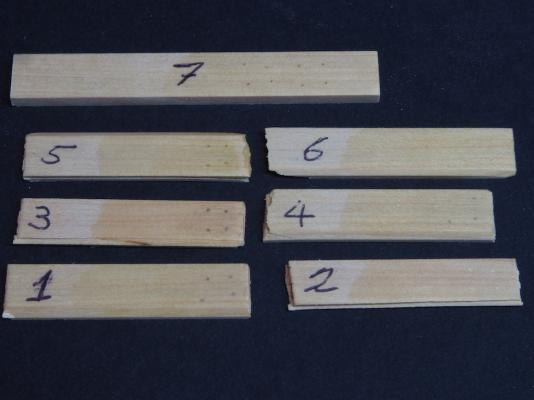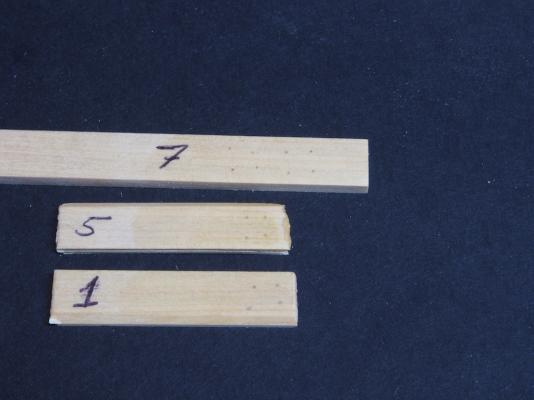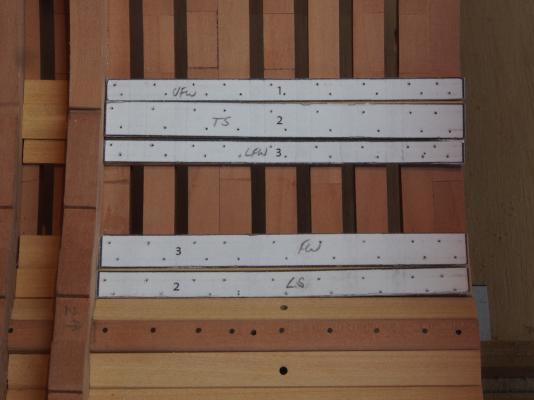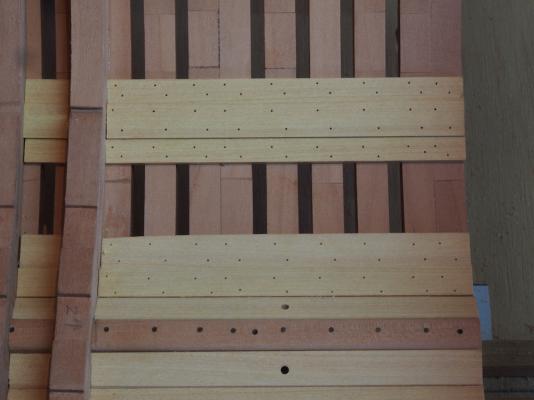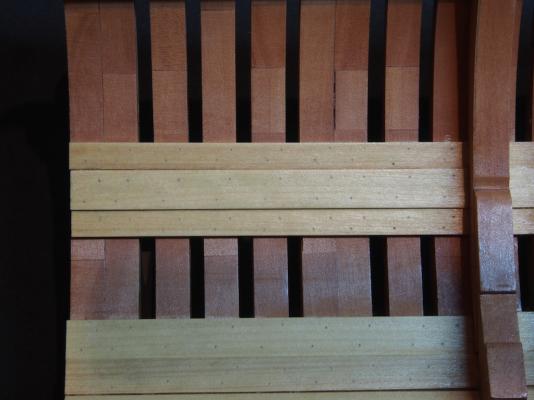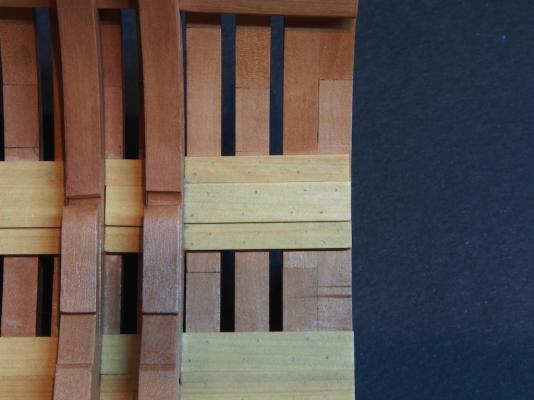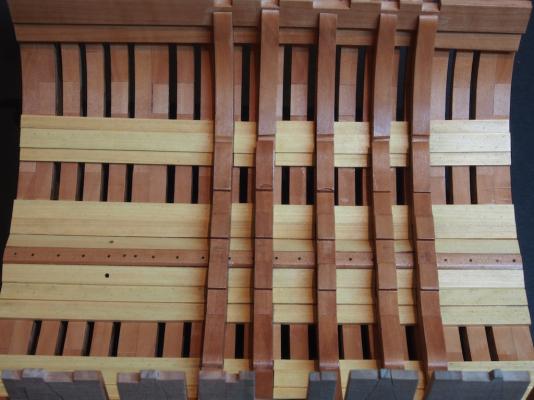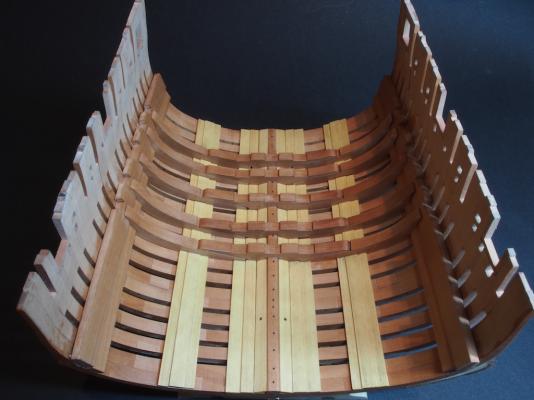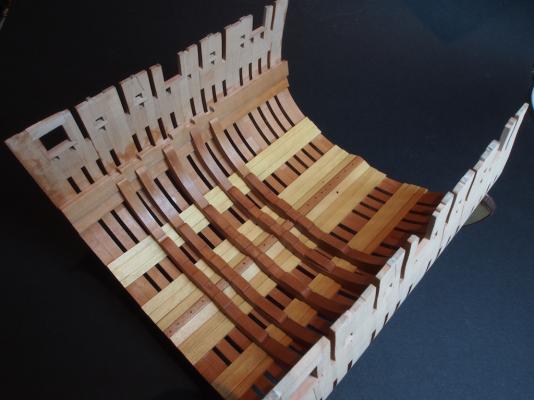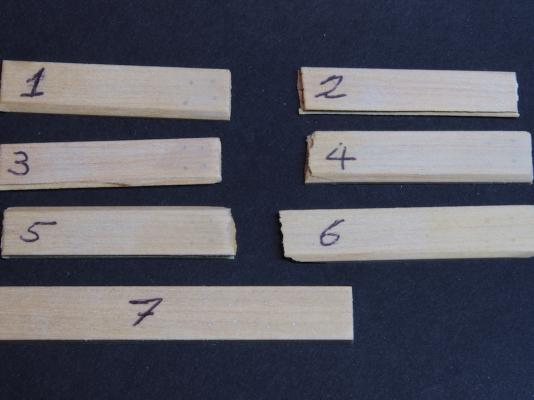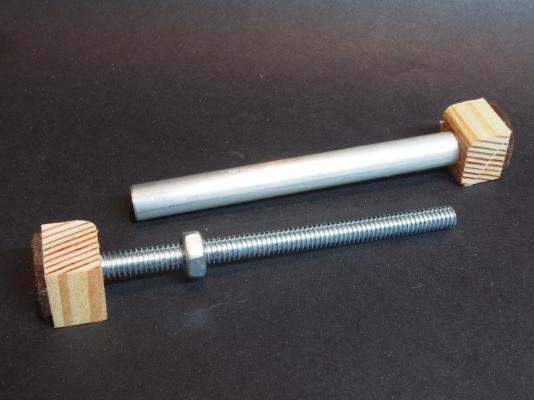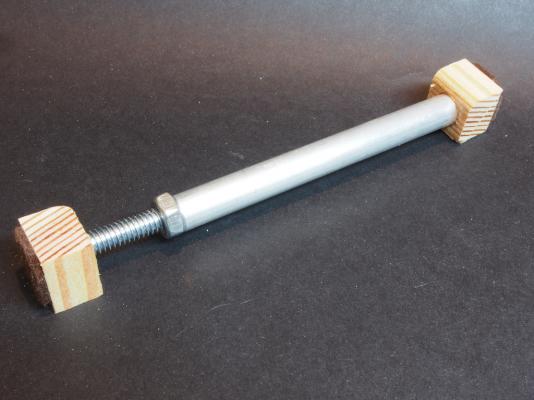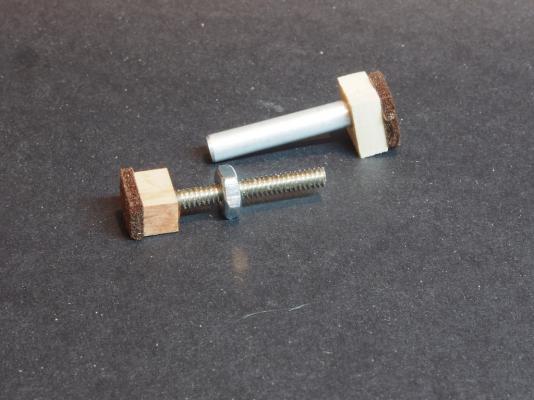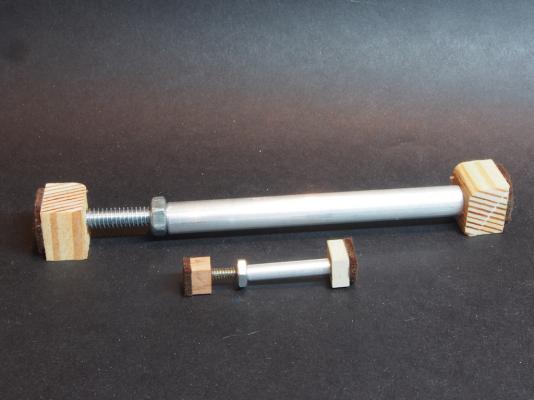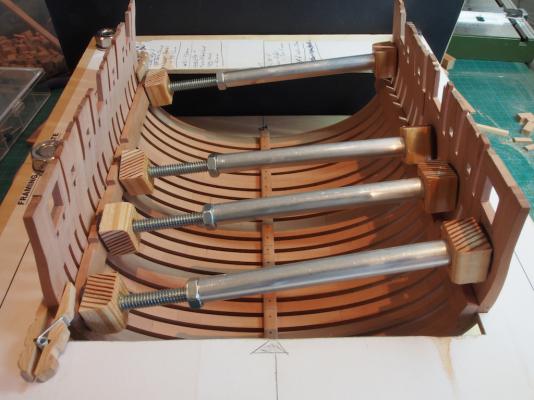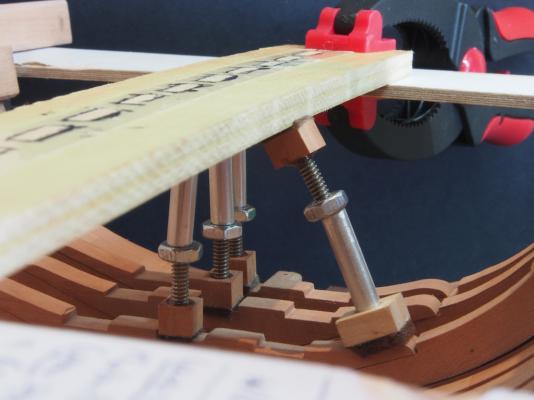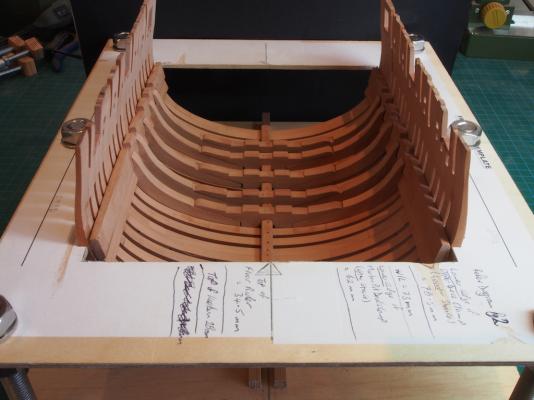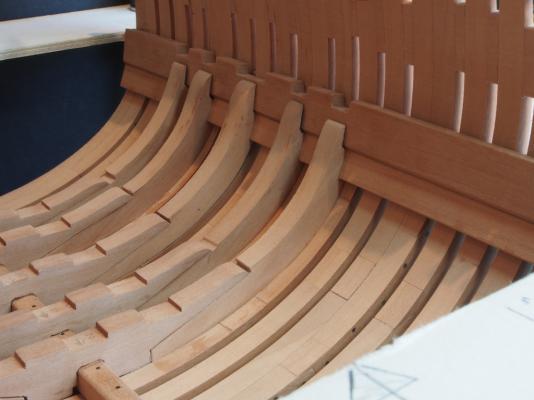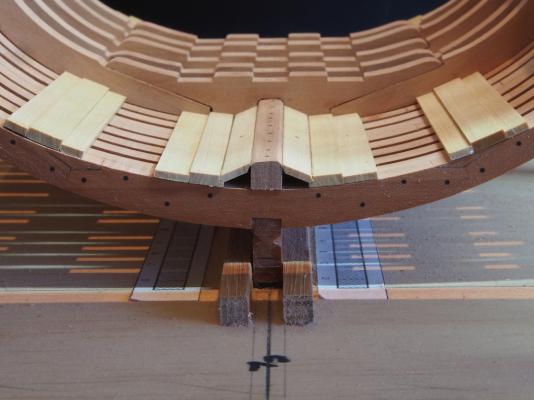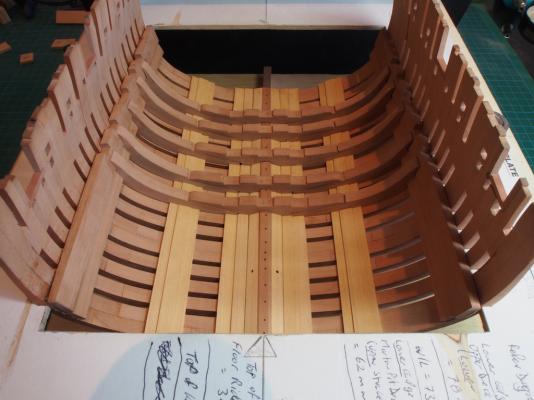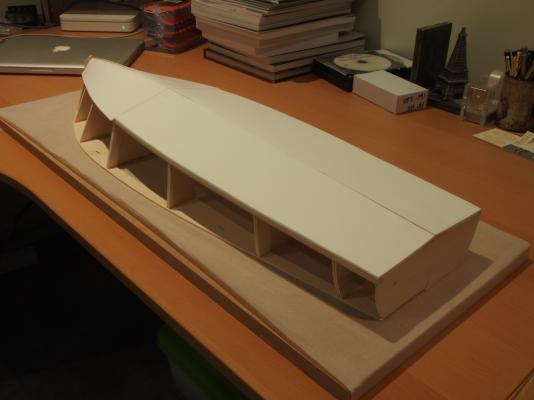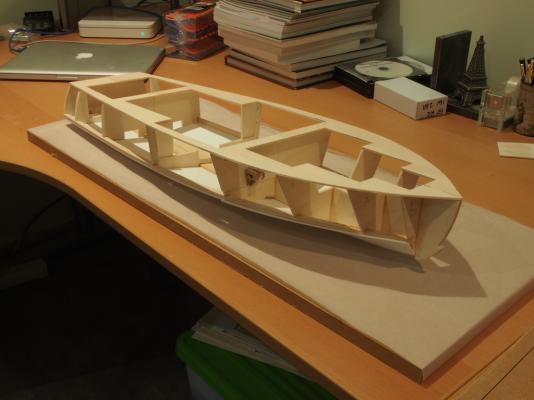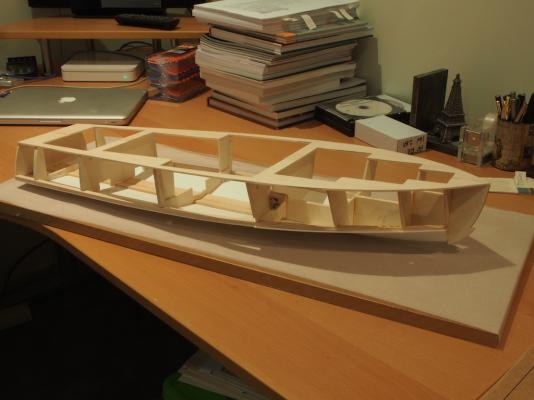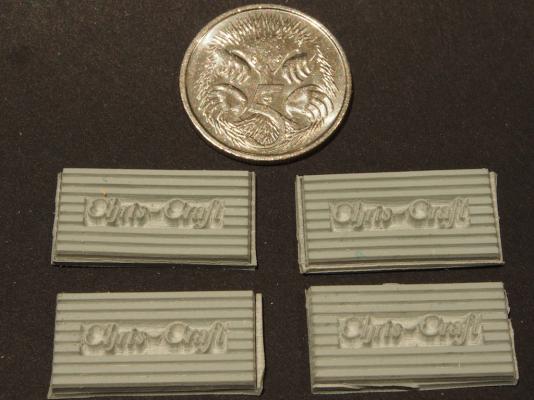-
Posts
4,880 -
Joined
-
Last visited
Content Type
Profiles
Forums
Gallery
Events
Everything posted by gjdale
-
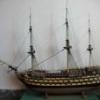
How about some TurboCAD help?
gjdale replied to jwileyr4's topic in CAD and 3D Modelling/Drafting Plans with Software
This article by our very own Wayne Kempson is a "must read" for anyone starting out lofting in CAD: http://modelshipworldforum.com/resources/plans_and_research/DraftingShipPlansInCADwayne.pdf I use TurboCAD (for Mac) and found Wayne's article a tremendous help, even though it's not TurboCAD-specific. The commands are all fairly common across software packages (I think). Wayne will also answer any specific questions you might have if you PM him. -
Thanks for all the input folks. The big tip was from both Mobbsie and Rusty, in actually applying Poly to the test pieces before deciding, so that's exactly what I did: The Admiral was consulted and immediately No.s 2, 4 & 6 were ruled out as being too light, and No. 3 for being too dark. That left No.s 1, 5 & 7: There was so little to distinguish between these three, that the choice came down to the method used. No.7 used Boxwood sawdust mixed with diluted PVA. No. 1 used a water-based wood filler, straight out of the jar. No. 5 was the same as No.1 but with a touch of Raw Sienna acrylic paint added. No.7 ran the risk of leaving a glue residue on the wood surface. No. 5 ran the risk of the paint staining the surrounding timber. No.1 offered no down side, so became the final choice by default. Cardboard templates were made up and drilled with a 0.4mm drill. The templates were temporarily fixed in place using double sided tape and the holes drilled. And here’s the resulting holes awaiting filler: Before filling the holes, the hull was removed from the jig and the exterior sanded fair. I cheated and used an electric “Mouse” sander for this. I was a bit worried about how the hull would stand up to this, but it was surprisingly solid. The Mouse made relatively short work of the fairing and did a very good job of it. I forgot to take photos of the exterior though! While I was at it, I made up a temporary work stand for the hull using the templates provided in the drawings (intended as the display stand). I just knocked this up using some scrap 6mm MDF and 6mm square stock for the stringers. I lined the inside with self adhesive felt to protect the hull while it is being worked on. The holes were then filled and the excess filler wiped off with a damp cloth. The whole of the interior up to and including the Mortar Pit Deck Clamps, was then given two coats of Wipe-On Poly (applied with a brush), with a light rub of steel wool between coats. The end result is faint, but distinguishable treenails - I'm quite pleased with how they turned out. In the following photo, you can see the temporary work stand: And finally, here’s a couple of overall shots of where she’s at now: Still tossing up about adding bolts to the Deck Clamps……….
- 456 replies
-
- finished
- bomb ketch
-
(and 2 more)
Tagged with:
-
Slow and monotonous they may have been John, but well worth the effort! They look great.
- 2,250 replies
-
- model shipways
- Charles W Morgan
-
(and 1 more)
Tagged with:
-
Hey Adam, Nice to see you back in the shipyard and posting again. Looking forward to the continuation of this lovely build.
-
Yep, the Optivisor is among the "essential" tools in my shop!
- 967 replies
-
- hahn
- oliver cromwell
-
(and 1 more)
Tagged with:
-
Thanks guys, Rusty has it right! I've just applied some poly and will re-photograph in the morning.
- 456 replies
-
- finished
- bomb ketch
-
(and 2 more)
Tagged with:
-
Hmmmmmmm.......... Interesting point you reveal about the changes in colour once the Poly is applied Mobbsie. Think I'm going to apply some Poly to my test pieces before deciding on filler colour. Yours looks fabulous with poly applied, by the way!
- 255 replies
-
- granado
- bomb ketch
-
(and 2 more)
Tagged with:
-
Hi all, Trying hard to keep up with Mobbsie, but this working for a living thing puts me at a distinct disadvantage! Have been doing some treenail tests using the "drill and fill" method and would appreciate some input as to what looks better. I won't say at this stage what the various concoctions used were as I'd like this to be a truly "blind taste test". Here's a couple of pics of the results. The only difference between the two is the placement of the test pieces in case camera angle made a difference. Voting lines are now open..........
- 456 replies
-
- finished
- bomb ketch
-
(and 2 more)
Tagged with:
-
Looking great Mobbsie. Must be a good feeling to successfully remove her from the jig. Looking forward to comparing notes on treenail concoctions.
- 255 replies
-
- granado
- bomb ketch
-
(and 2 more)
Tagged with:
-
Stunning Remco - just we would expect from you.
- 1,207 replies
-
- sloop
- kingfisher
-
(and 1 more)
Tagged with:
-
Great to see you back and posting again Bill. Just love drooling over your exquisite work!
- 382 replies
-
- sovereign of the seas
- carving
-
(and 1 more)
Tagged with:
-
Thanks everyone for the nice comments and all the likes. There have been so many comments on the spales, that I think it only right that I should acknowledge the source of this idea, that being my Warrior Practicum books by William Romero. Wouldn't want y'all thinkin' I was capable of original thought now!
- 456 replies
-
- finished
- bomb ketch
-
(and 2 more)
Tagged with:
-
Well, laziness got the better of me and I paid the price! I had decided that the next step was to permanently install the Mortar Pit Deck Clamps. To do this, I needed to clamp the Clamps properly to the frames. However, as “regular” clamps could not fit around the frames/jig, I decided to use a push method to hold them in place. This is where I got lazy. I thought I would just use some scrap timber cut slightly over length and then wedge this between the opposing sides to give a pushing force on the clamps. Unfortunately, all I succeeded in doing was marking the face of the Clamps to the extent that they needed to be totally re-made. Time to re-think clamping. I decided to do what I should have done in the first place, and make up some spales. These are really simple to make and require only some brass or aluminium tube, some threaded rod, nuts to suit, some scrap wood and some felt. A quick trip to the hardware store got me all the supplies I needed and in next to no time I had some spales ready to use: I made these to a size to suit this specific job. While I was at it, I made up some smaller ones that I figured would come in handy when fixing the riders in place. Just for comparison, here’s the two sizes side by side: With these made up, and it was a simple job to re-cut the Mortar Pit Deck Clamps and then glue them in place using the spales to hold them tightly: Once the Clamps were in place, I could then install the Riders. The mini-spales came in real handy for this job: Here is a couple of pics of the Riders in place. The joinery is not as tight as I would have liked, but I’m hoping that most of the flaws won’t be terribly visible later on. Limber Boards and Footwaling With the Riders in place, it was time to install the Limber boards and Footwaling. This was a fairly straight forward job – and it was the first introduction of a different “colour” of timber - Boxwood. The “L”-shaped rabbet in the Limber Strake was cut using the Byrnes saw, and the angle faces on the Limber board were achieved using the Byrnes disc sander. Temporary spacers were cut to aid in placing everything at the right distances. Here’s the result: Still tossing up whether to add tree-nails to the planking here. The correct scale size would be a #78 drill bit. If I do these, I may use the drill and fill method, rather than trying to draw proper treenails to that size. Will give this some further consideration during the week. Observations / suggestions welcome.
- 456 replies
-
- finished
- bomb ketch
-
(and 2 more)
Tagged with:
-
Hey Chuck, Fantastic video tutorial! Thanks so much for posting these. I don't know if you've considered it, but if you re-made these videos with a "proper" view over your shoulder, I'm sure they would sell like hot cakes through your Syren shop. Your commentary is great and really explains both what and why you're doing each step in a way that is very easy to follow. You're a natural teacher! You could do a whole series of these videos that folks could choose from as their needs arise. Reading about it is one thing - seeing it done adds a whole new level of understanding.
- 1,051 replies
-
- cheerful
- Syren Ship Model Company
-
(and 1 more)
Tagged with:
-
Yep, lovely work there Augie. You really do keep raising the bar.
- 2,191 replies
-
- confederacy
- Model Shipways
-
(and 1 more)
Tagged with:
-
Lovely work John. She just keeps getting better.
- 745 replies
-
- francis pritt
- mission ship
-
(and 1 more)
Tagged with:
-
Good for you John! The hardest part is making the decision to re-do. After that it's easy. I know you'll be very pleased you made this decision once the re-do is complete.
- 2,250 replies
-
- model shipways
- Charles W Morgan
-
(and 1 more)
Tagged with:
-
Thanks Mobbsie, Augie, Jack and David. David - I ordered those sanding blocks on line. Can't remember where/who from, but that's why I posted the pic of the packaging. The one thing I do recall is that they were not at all expensive.
- 456 replies
-
- finished
- bomb ketch
-
(and 2 more)
Tagged with:
-
Once the glue had dried, the bottom planking was faired back level with the chine strip and the transom. The next step is to release the hull from the build board by removing the previously applied staples in the sheer plank. It looks kinda boat-like now! The Sheer plank now needs to be faired to the frames before applying the side planking. Just debating whether to install some running gear and cabling before installing the side planks. My order from MACK products arrived during the week, and I’m very pleased with the looks of the various goodies (which will be revealed in due course). In the meantime, picking up on an idea from the RC Groups forum, I contacted a rubber stamp making company here in Australia and had them make up some Chris-Craft logo rubber pads for the step pads. The company were excellent to deal with and produced proofs from a photo I sent them. Once I gave them the go ahead, the finished product was waiting for me when I got home from work the next day. Can’t beat that for service! The stamps are only available in grey rubber, but I think they should paint up okay with black paint. I’m very pleased with the way they have come out. They look better than the photo suggests – I couldn’t get the camera to focus on the pads instead of the five-cent piece!
- 339 replies
-
- dumas
- Chris-Craft
-
(and 3 more)
Tagged with:
About us
Modelshipworld - Advancing Ship Modeling through Research
SSL Secured
Your security is important for us so this Website is SSL-Secured
NRG Mailing Address
Nautical Research Guild
237 South Lincoln Street
Westmont IL, 60559-1917
Model Ship World ® and the MSW logo are Registered Trademarks, and belong to the Nautical Research Guild (United States Patent and Trademark Office: No. 6,929,264 & No. 6,929,274, registered Dec. 20, 2022)
Helpful Links
About the NRG
If you enjoy building ship models that are historically accurate as well as beautiful, then The Nautical Research Guild (NRG) is just right for you.
The Guild is a non-profit educational organization whose mission is to “Advance Ship Modeling Through Research”. We provide support to our members in their efforts to raise the quality of their model ships.
The Nautical Research Guild has published our world-renowned quarterly magazine, The Nautical Research Journal, since 1955. The pages of the Journal are full of articles by accomplished ship modelers who show you how they create those exquisite details on their models, and by maritime historians who show you the correct details to build. The Journal is available in both print and digital editions. Go to the NRG web site (www.thenrg.org) to download a complimentary digital copy of the Journal. The NRG also publishes plan sets, books and compilations of back issues of the Journal and the former Ships in Scale and Model Ship Builder magazines.



